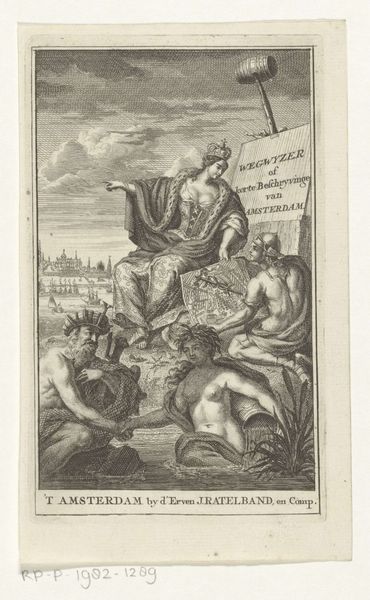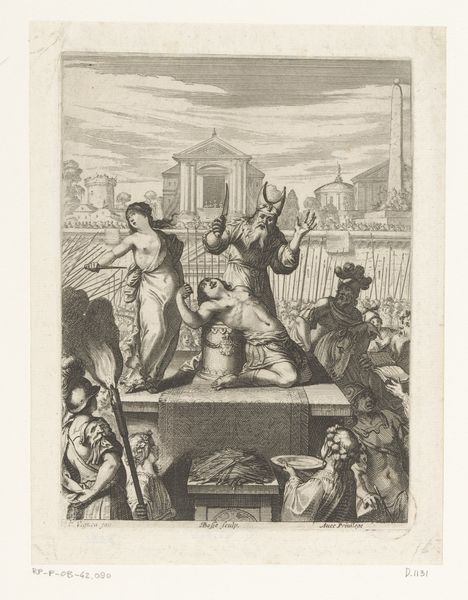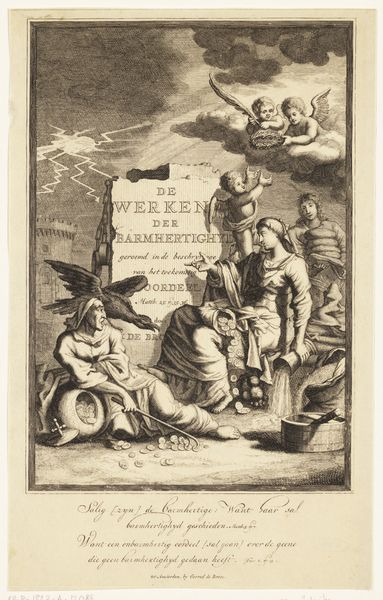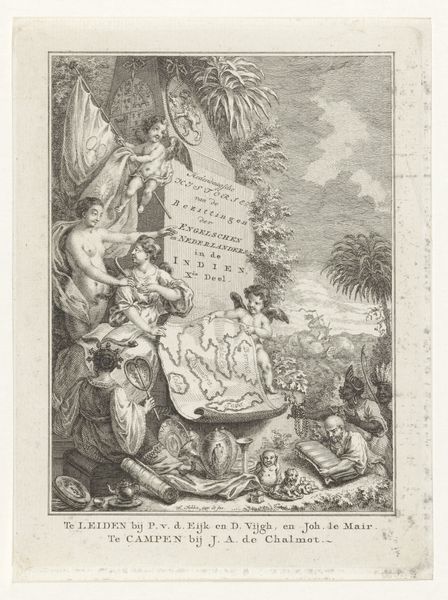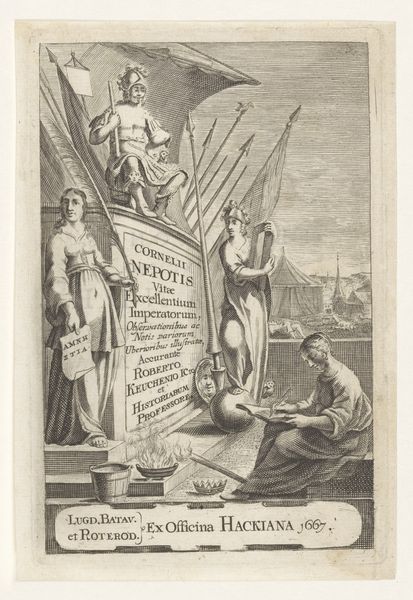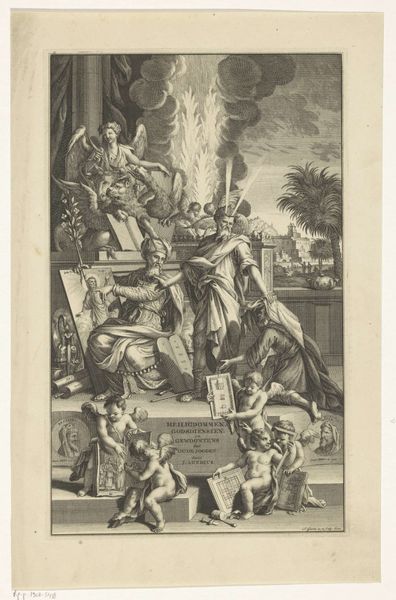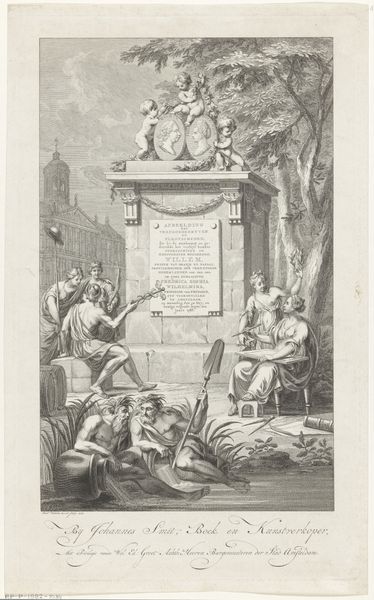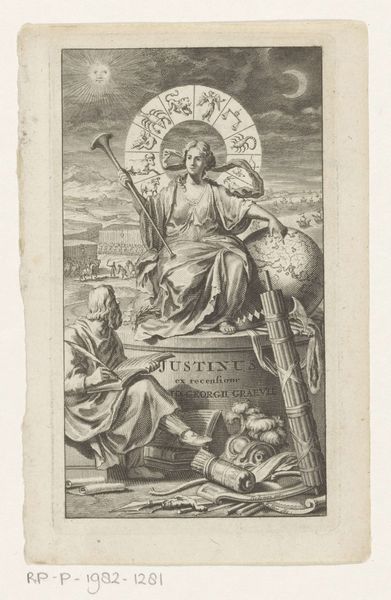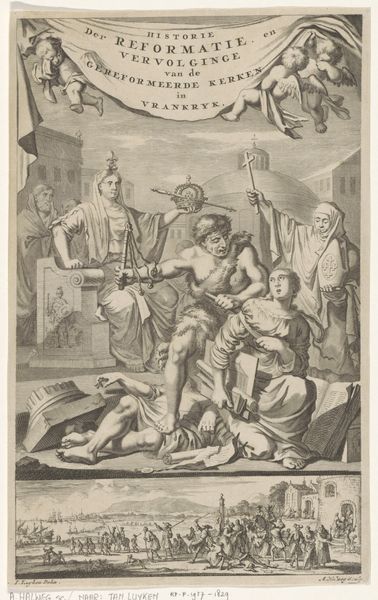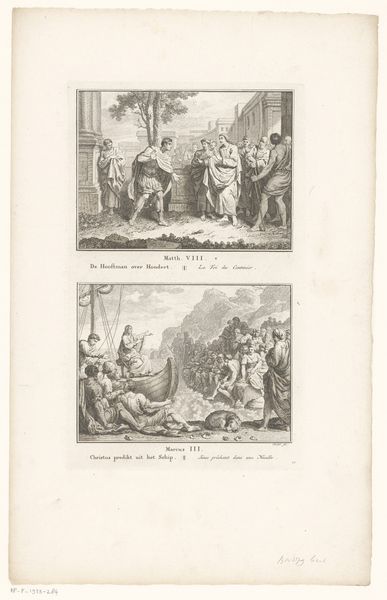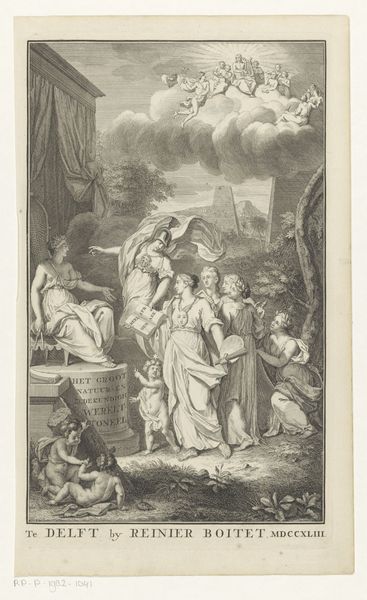
engraving
#
allegory
#
baroque
#
figuration
#
line
#
history-painting
#
engraving
Dimensions: height 226 mm, width 182 mm
Copyright: Rijks Museum: Open Domain
Curator: This engraving, created in 1722 by Willem de Broen, is entitled *Allegorical Representation with Faith and Moses*. It’s currently held in the Rijksmuseum. My first thought is—wow, what a dramatic composition. It's like a stage set! Editor: I agree; the scene unfolds almost cinematically. You have this weighty, serious tone communicated through the dense composition, typical of baroque engravings. The weight of doctrine, perhaps? Curator: Definitely, there's the towering figure of Moses, of course, clutching the Ten Commandments. But note how the figure representing Faith—holding her palm frond—is positioned directly adjacent to what appears to be "La Sainte Bible." Editor: This clearly places focus on how societal structures position themselves as ordained to lead—a patriarchal configuration through which women have often experienced erasure or appropriation of identity, ironically also having its footing in the written word as a historical object. Curator: It’s a fascinating illustration of the era’s focus on religious allegory—how cultural institutions used such visual tropes. The billowing curtains, the cherubic figures in the clouds above— it’s a feast for the eyes, but one laden with significant ideological meaning. Editor: Exactly! The public consumption of imagery like this can serve to disseminate an accepted social and historical narrative that impacts collective thought, but what about counter-narratives or the individuals this forgets? Curator: Consider its creation in the context of Dutch society in 1722. There was significant debate about the relationship between faith, reason, and secular authority during this period. De Broen’s work may be offering a vision of those competing tensions. Editor: Absolutely, examining the artistic institutions involved, like the Rijksmuseum—understanding its curatorial choices shapes our understanding too. Are works like this presented critically, engaging with questions of power and representation? Or are they simply exhibited for their historical or aesthetic value, without acknowledgement of such topics? Curator: That's a critical question. It highlights how the work’s meaning is never static but shifts and changes in relation to culture—in relation to us and where we stand in time. Editor: And to the socio-political power dynamics always at play! Curator: It pushes us to consider the complex dialogues this print ignites concerning religion, cultural representation, and social order. Editor: This artwork opens up critical discussions regarding institutions of socialized thinking and its role throughout historical time.
Comments
No comments
Be the first to comment and join the conversation on the ultimate creative platform.
